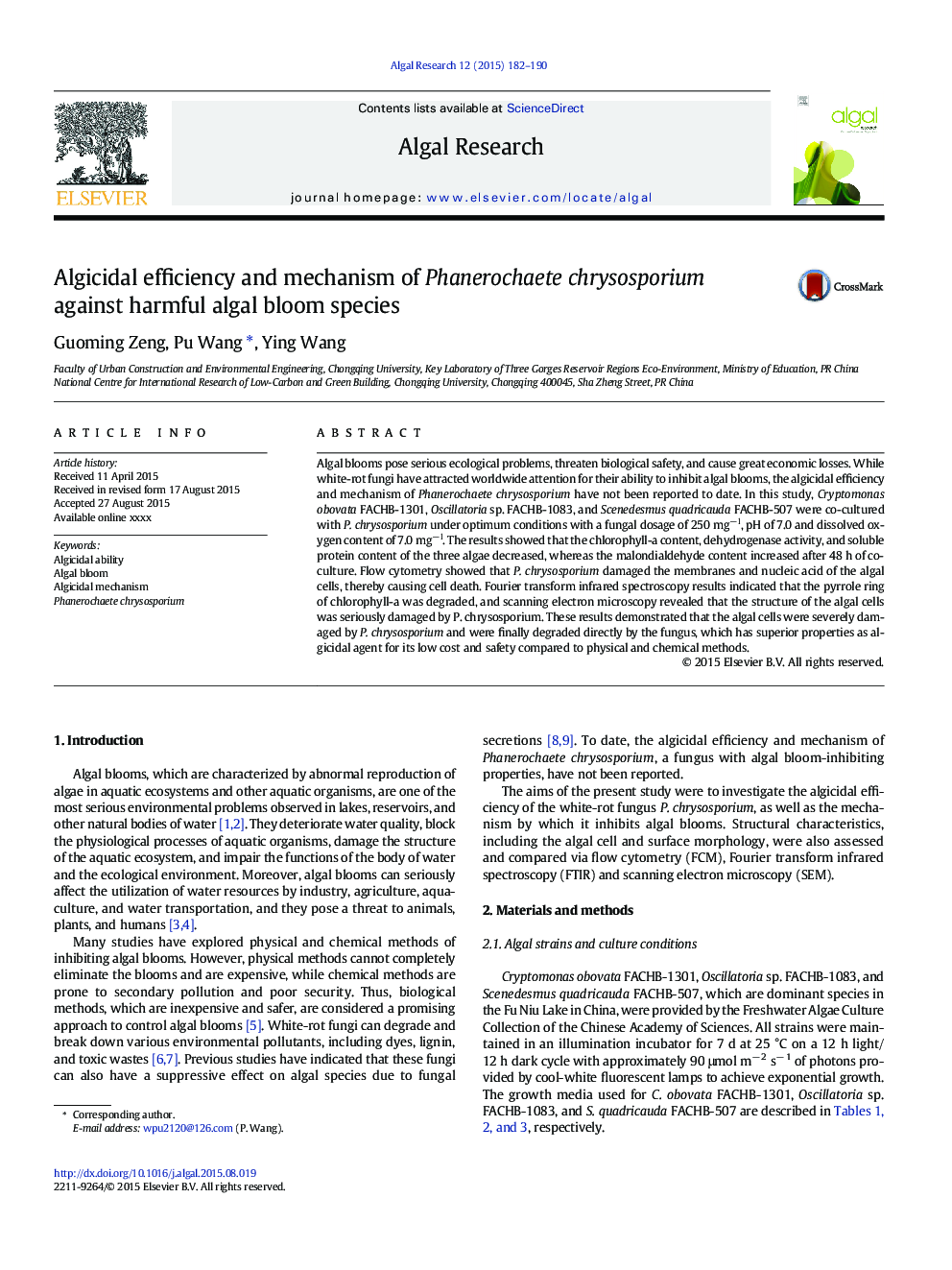| Article ID | Journal | Published Year | Pages | File Type |
|---|---|---|---|---|
| 8087635 | Algal Research | 2015 | 9 Pages |
Abstract
Algal blooms pose serious ecological problems, threaten biological safety, and cause great economic losses. While white-rot fungi have attracted worldwide attention for their ability to inhibit algal blooms, the algicidal efficiency and mechanism of Phanerochaete chrysosporium have not been reported to date. In this study, Cryptomonas obovata FACHB-1301, Oscillatoria sp. FACHB-1083, and Scenedesmus quadricauda FACHB-507 were co-cultured with P. chrysosporium under optimum conditions with a fungal dosage of 250 mgâ l, pH of 7.0 and dissolved oxygen content of 7.0 mgâ l. The results showed that the chlorophyll-a content, dehydrogenase activity, and soluble protein content of the three algae decreased, whereas the malondialdehyde content increased after 48 h of co-culture. Flow cytometry showed that P. chrysosporium damaged the membranes and nucleic acid of the algal cells, thereby causing cell death. Fourier transform infrared spectroscopy results indicated that the pyrrole ring of chlorophyll-a was degraded, and scanning electron microscopy revealed that the structure of the algal cells was seriously damaged by P. chrysosporium. These results demonstrated that the algal cells were severely damaged by P. chrysosporium and were finally degraded directly by the fungus, which has superior properties as algicidal agent for its low cost and safety compared to physical and chemical methods.
Related Topics
Physical Sciences and Engineering
Energy
Renewable Energy, Sustainability and the Environment
Authors
Guoming Zeng, Pu Wang, Ying Wang,
